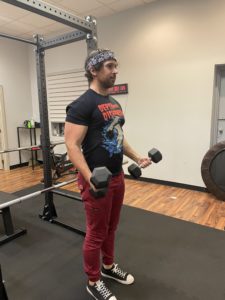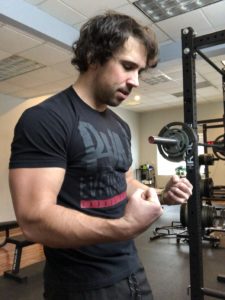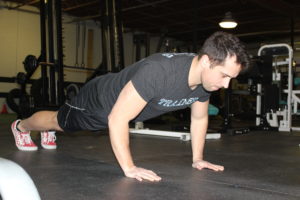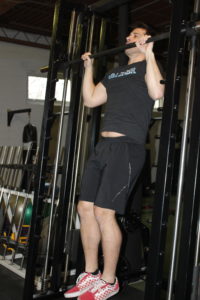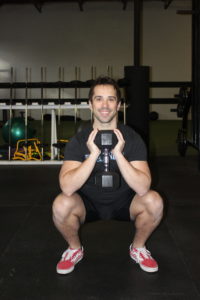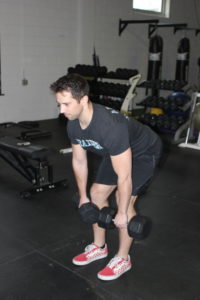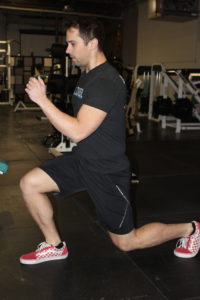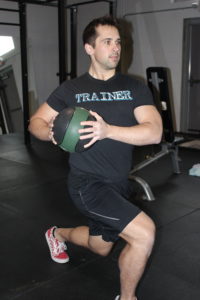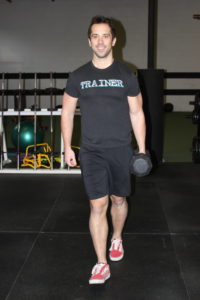Joining a gym or signing up with a trainer is a great start, but if you really want to take full advantage of your fitness journey, there are a few intangibles you need to address to ensure you’re getting the most out of this journey. Too often I hear stories of people “doing everything I can” to get in shape – regardless of their goal – only to hear one of these topics being left unattended, that I know could be the one thing holding them back from launching into success. It would be great to know that all you had to do was workout a few times a week for 30-60 minutes and reach your full potential, but like any project you’ve done before (school, work, home), you know there are always additional pieces that need to be addressed in order for it all to come together!
Only this time, the project is yourself!
So you’ve got your training program and you’re ready to go or already kicking butt, let’s talk about the 4 secrets to fitness success outside of the gym! I’m talking about Nutrition, Rest/Recovery, Hydration, and Consistency! These 4 pillars of fitness, wellness, and health are the driving factors that power any fitness journey from fat loss to muscle gain; athletic performance to just staying healthy for yourself and your family. Let’s dive a little deeper, shall we?
Nutrition – You Can’t Outwork a Bad Diet
As much as it pains me to admit, all those cheesy affirmations about “abs are made in the kitchen” and “the best fat loss workout is 3 sets of 10 reps of not eating so much junk.” are true. All the working out in the world is fine, but if you’re not fueling your body with the right things, you’re going to have a hard time reaching your fullest potential. That being said, the aim is NOT perfection. If we aim for perfection and have a minor slip up, chances are that we’ll backslide further down. None of us are perfect as it stands, so to completely change and aim for 100% is just unrealistic. Instead, we need to adapt a “Progress > Perfection” mindset. Taking a minute to look at what you’re eating in a day, a few days, a week can really help open your eyes to the choices you make and better understand not only WHAT you eat, but also WHY you’re eating it. From there, we can start to make better choices. Regardless of your goals, a few rules of thumb include:
-Focusing on lean protein sources; complex carbs; and healthy fats
-Limiting consumption of highly processed foods, sugar, and alcohol
-Increasing the amount of fruits and veggies we take in
-Remembering that a bad meal isn’t the end of the world, but don’t miss more than 2.
Taking time to address your nutrition and make grocery lists that focus on options even slightly healthier than they currently are can be a major step in the right direction. Clean up your nutrition and not only should you see the changes, but you’ll feel them as well!
Rest/Recovery – “I’ll sleep when I’m dead.”
Though that’s true, it will be the “long sleep”, but that’s a horrible position to take in regards to your health. Everyone is different and functions on different levels of sleep, but the generally agreed level of sleep is 7-9 hours every night. If you’re a person who regularly gets the same amount of sleep each night, you can tell a major difference on the days when you get more or less than that median and it’s not typically for the better. Not only will less sleep make you feel prolongingly tired, but the additional time that you are awake and sleep deprived, the higher your chances of faulting on your nutrition, not having energy for your training sessions, and overall just not being your best self. Finding a good sleep routine including turning off electronics; lowering the room temperature; blocking out all light; etc. can help better your sleep behavior and increase your recovery time.
Beyond sleep, rest days from training are crucial for your body to be its best. If you’re training your body every day, you’re not giving yourself adequate time to repair and build into a stronger, healthier version. When we workout – in any capacity – you are creating tiny tears in the micro fibers of your muscle tissue (not a bad thing), but if you’re not allowing the body enough time to fully recover those tears and continually pushing yourself, not only could you be more susceptible to injury, but using fatigued muscles won’t provide for best efforts in the gym. Take your rest/recovery days seriously and you’ll see exponential leaps in your gym performance.
Taking it a step further, todays world is rife with stress. When our stress levels are up, we are in a heightened state mentally and physically. This can wreak havoc on our bodies in a variety of ways, but if we’re able to find outlets or work on how we handle stress to lessen the effect it has on us, the quicker our body can recover – from physical and mental stress.
Moral of this story – rest, recover, de-stress and see how much further you go after slowing yourself down.
Hydration – Now that’s some high quality H2O.
It can’t be stressed enough how important water is to your overall health. If our bodies are made mostly of water, what makes you think that you should cut back on how much you take in? The average person drastically undercuts themselves on how much water they drink daily. And contrary to belief, you don’t need to slug a gallon per day. Even hitting 100oz of water each day can drastically change your body physically and mentally.
Water keeps your muscles hydrated and healthy.
Water keeps your circulatory system clear and healthy.
Water keeps your waste system flowing and healthy.
Water keeps your skin clear and hair strong and healthy.
Water keeps you mentally fresh and healthy.
Water keeps your appetite at bay and healthy.
Water is the best.
It cools you down; it keeps food cravings away; it’s wonderful.
Drink more of it!
This does not include sodas, juices, energy drinks, alcohol, etc. just because “it has water in it!” The amount of every other bit of crap in all of those completely destroys any possible health aspect that water tries to help. Limit or eliminate those from your routine and focus on water (or sparkling water) and you’ll feel healthier in so many different ways. It’s the best supplement that everyone overlooks, don’t be one of that crowd.
Consistency – Success doesn’t come from what you do occasionally…
It comes from what you do consistently. It doesn’t matter what your fitness goal is, if you can’t make it a priority to consistently work on it or show up every day, then you’re leaving a LOT of success on the table. Overnight successes or quick turn around stories often lead to rebounding back to the origin or worse because once the goal is reached, the habit disappears. If you want to reach your fitness or health goals, you have to be willing to do the work. You didn’t get to where you are right now – wherever that may be – overnight. It took weeks/months/years of consistent habits and behaviors (whether positive or negative behaviors) to lead to where you are. If you’re trying to lose 30 lbs, but you’re 50 years old; haven’t lifted a weight or eaten a healthy meal in 25+ years, you have to understand that it will take longer than 15 days to reach that goal. That is years of habits and behaviors that need to be unlearned or re-focused toward the new goal you’re working toward. You have to show up consistently and put in work on yourself every day in some capacity. This doesn’t mean working out every day – as noted earlier, rest is an incredibly important aspect to any fitness journey – but you can focus on mindset goals, habit changes, those pesky stress inducing problems, etc. Our health journey is more than physical and by consistently working on a little something every day, it may take months, years, decades even to reach where you want to go, but if you show up every damn day, I guarantee you’ll get there faster than if you yo-yo back and forth between bouts of crazy high and low activity. “The journey of 1,000 miles starts with a single step”. Take that step, then another, and another, and when you don’t feel like stepping, take another!
There is no end all; be all plan that will get you to your goals instantly – if there was, you’d bet your ass I would have tried it. But know that when you start your journey and you address more than just your workout routine – dialing in your nutrition; planning rest days and recovery protocols; keeping hydrated; and creating habits that consistently get you showing up every day – you’ll be on the right path to success on your fitness journey, no matter the goal.
Now stop reading and go kick some ass!

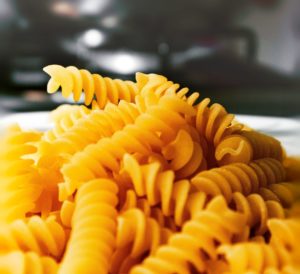 arded compared to protein. Carbohydrates should be more focused prior to a training session as they will help provide the energy needed to get through your training session.
arded compared to protein. Carbohydrates should be more focused prior to a training session as they will help provide the energy needed to get through your training session.